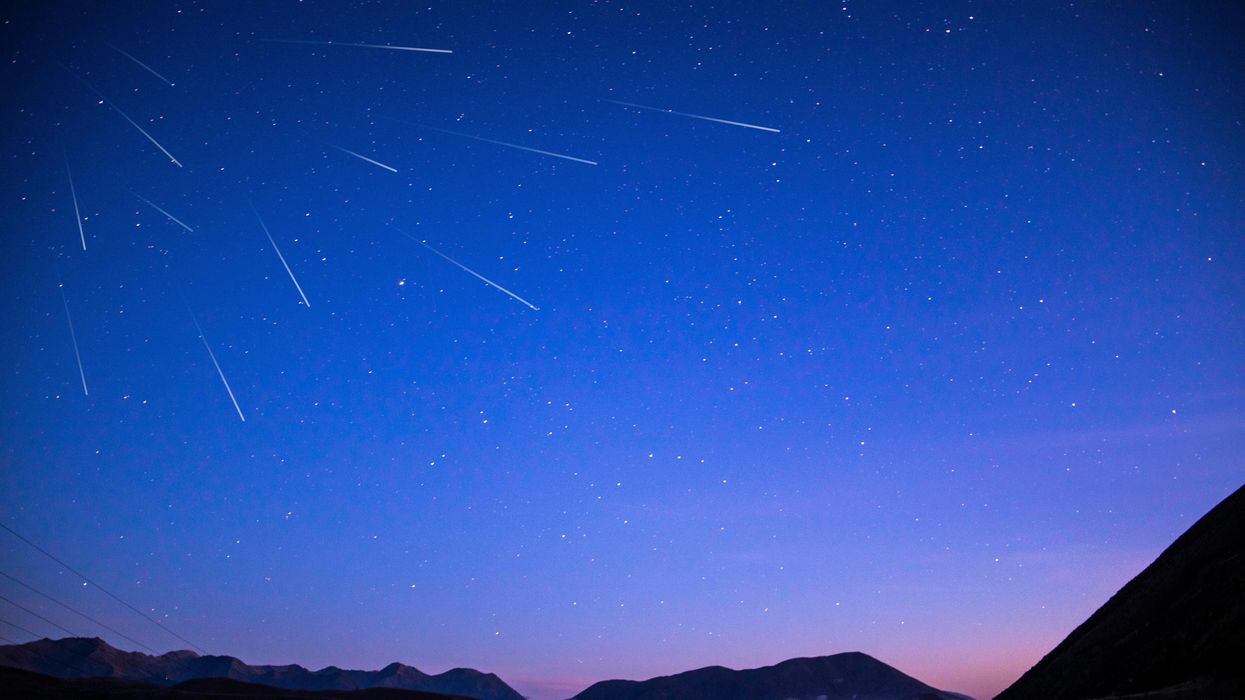Leonid Meteor Shower May Have A Rare Outburst Of 100 Meteors & You Could See It From Canada
You might want to keep your eyes on the skies tonight! 🌠

Meteors streaking across the sky during a meteor shower.
There's a chance that a rare meteor shower outburst could cause up to 100 meteors to streak across the sky in Canada tonight during the Leonid meteor shower!
According to The Weather Network, the Leonids mostly pass by without causing a spectacle but overnight from Friday, November 18 to Saturday, November 19 could be very different.
Experts have predicted that "a rare meteor outburst" could happen in the overnight hours and up to 100 meteors or more could be seen.
Each year in November, Earth passes through a stream of debris left behind by the Tempel-Tuttle comet which causes shooting stars to streak across the sky.
Since the meteors appear to come from within the constellation Leo, this celestial event is known as the Leonid meteor shower or the Leonids.
The Leonid meteor shower usually only produces a few fast-moving, bright meteors each hour during its peak but those shooting stars can be pretty impressive.
That's because they speed through the sky at more than 70 kilometres per second and have "persistent trains," glowing trails behind them that can last for minutes or even hours!
When can I watch the Leonid meteor shower?
According to the International Meteor Organization, there is a chance of an intense outburst of meteor activity on the morning of Saturday, November 19 from around 1:00 a.m. to 1:30 a.m. ET.
This "increase of bright Leonid activity" is favourable for people in the eastern half of North America.
It could only last for a few minutes as the Earth passes through the debris fields quickly.
While the strength of the outburst isn't known, some experts have predicted between 50 and 300 meteors per hour, according to The Weather Network.
How can I see a meteor shower?
The Canadian Space Agency has tips on how to watch meteor showers which include going away from city lights so you can spot even faint meteors and being patient because it could take a while before you actually see a shooting star.
According to the International Meteor Organization, some Leonid activity could be seen shooting upwards from the eastern horizon as midnight approaches.
The Leonid meteor shower can be seen in any part of the sky but it's best to concentrate on the constellation Leo since that's where the meteors radiate from.
Looking in the eastern half of the sky is also recommended because that's where the meteors can be seen shooting in all directions!
This article's cover image was used for illustrative purposes only.
